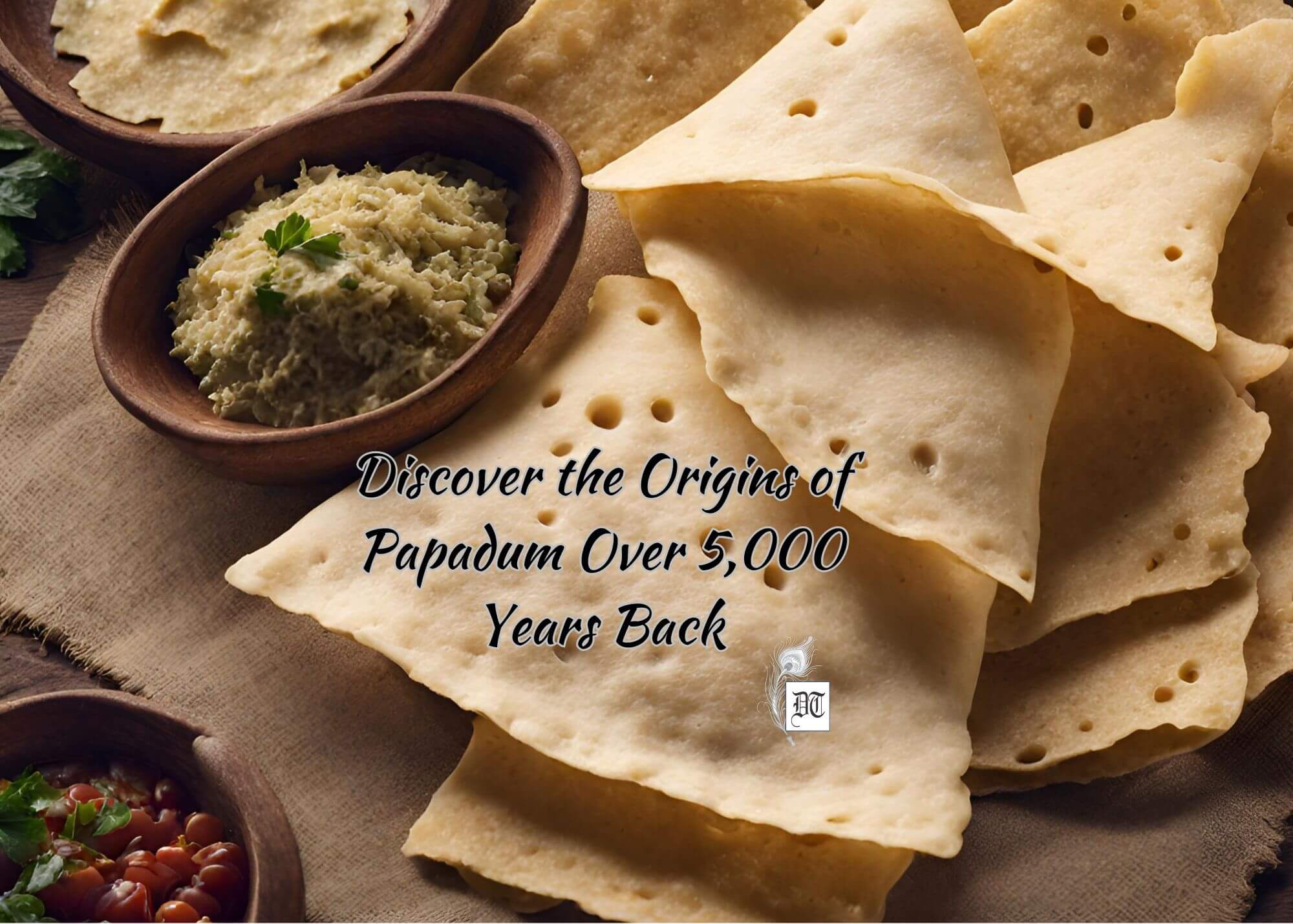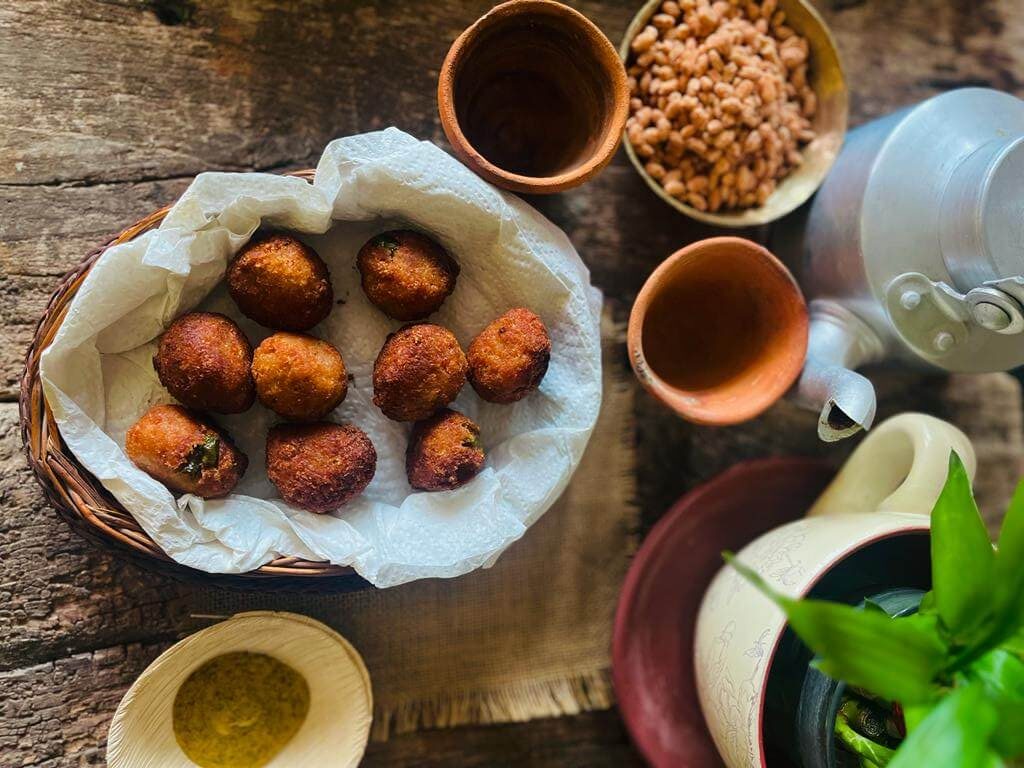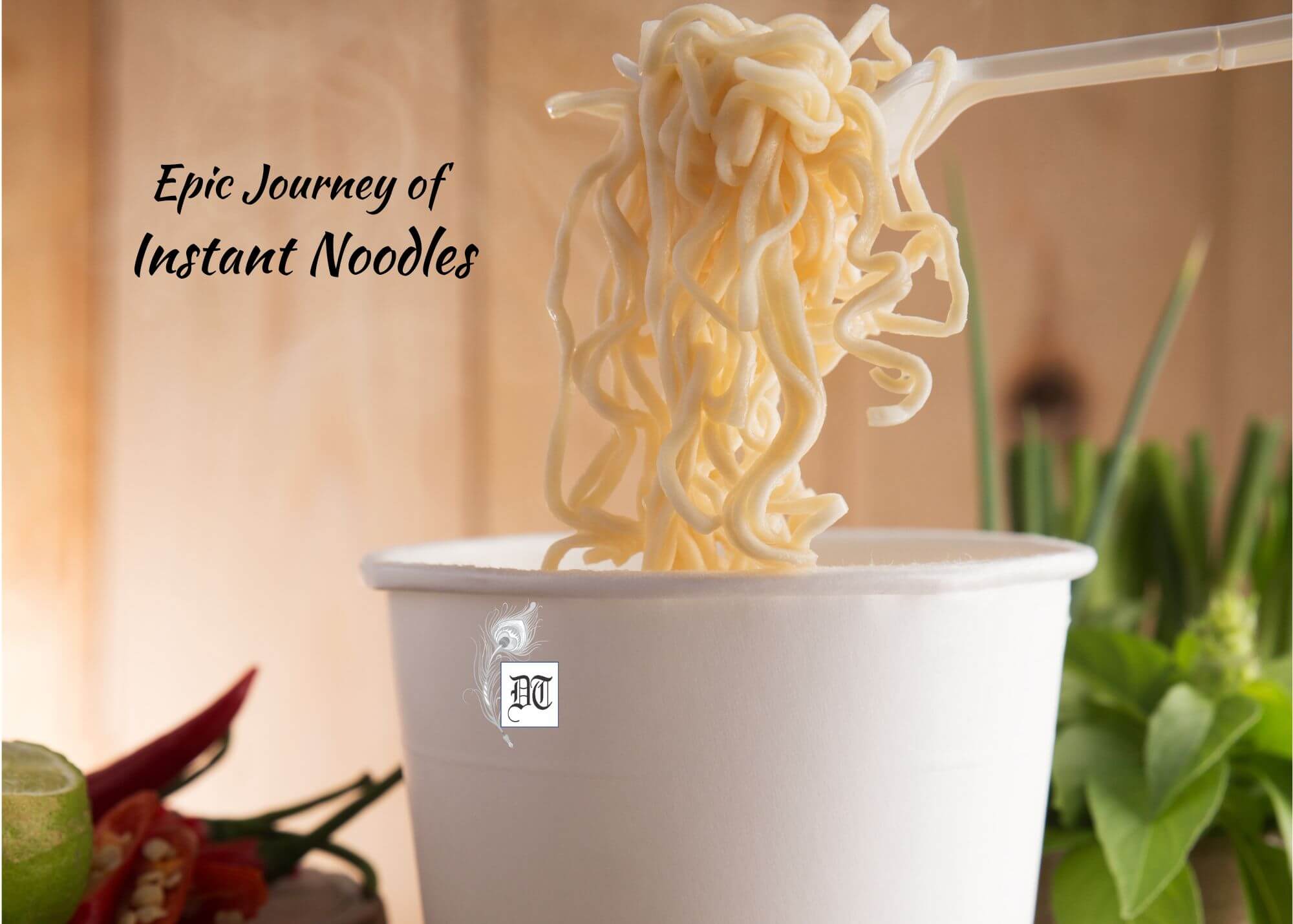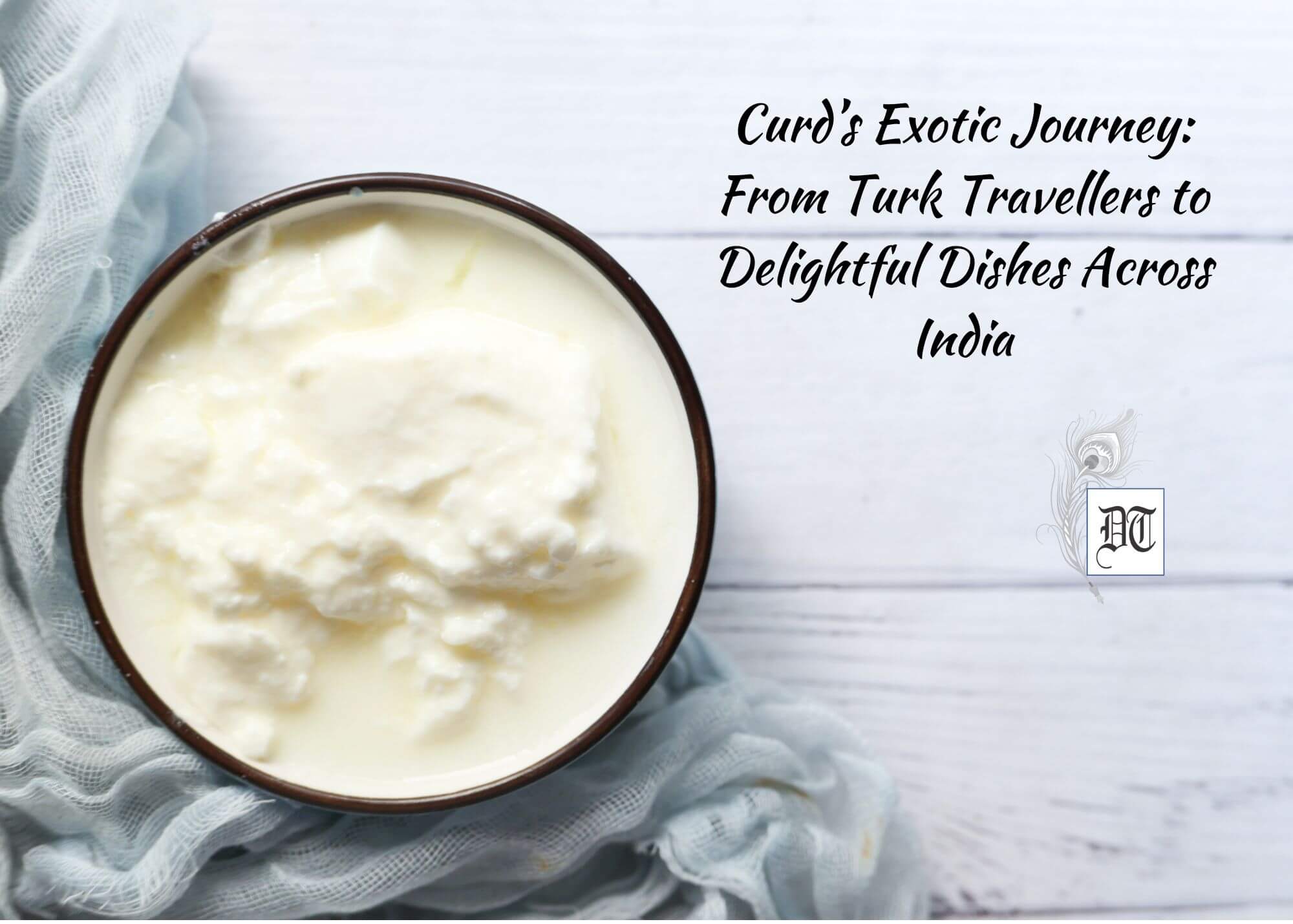Lily tells us about the origin and journey of Kachoris along the trade routes in India. Learn more about the delicious street food, in the weekly column, exclusively in Different Truths.
A walk through the colourful bazaars of India, on a sunny winter’s day, is a delight. One of the sights that you might encounter is a huge pile of piping hot kachoris lying outside a sweetmeat shop. A halvai, most likely with a protruding paunch would be seen frying the round, slightly flattened balls of flour. Kachori is a spicy Indian snack, also eaten in many parts of South Asia like Suriname, Trinidad, Tobago, and Guyana.
Banarsidas, the author of Ardhakathanaka, wrote that he bought kachoris, in Agra, in 1613. Interestingly, he mentions buying a ser (a terminology for weight) of kachoris daily. The streets of Old Delhi and Kota in Rajasthan also served kachoris much before samosas started showing up, after partition.
 Kachoris are known as the snack of traders and we Indians have had a passionate love affair with them, before the fear of calories and cholesterol got impregnated in our gullible minds.
Kachoris are known as the snack of traders and we Indians have had a passionate love affair with them, before the fear of calories and cholesterol got impregnated in our gullible minds.
The Marwaris are supposed to have introduced it to the world. This community took it all over the country for they travelled the length and breadth of India for trade and commerce. Street foods generally evolved around bazaars so that traders could fill their stomachs while conducting businesses.
If one travels to Jodhpur from Jaisalmer, there is a chance that the driver will break journey outside a Pokhran shop selling kachoris. Trade routes since ancient times passed through the Marwar region of Rajasthan. Being primarily vegetarians, they spice up their food with whatever produce is available locally. Spices that are cooling according to ancient wisdom, like coriander and fennel seeds, as well as turmeric are added to the stuffing in the kachoris. That is why this sumptuous snack can be eaten despite the scorching heat of the desert.
There are many who feel that the heart of Marwar is where kachoris were possibly born. The Magar Kachori of Jodhpur is an example of excellence. Despite having no fresh produce, it is lip-smacking. The stuffing is made with Mung Dal or mung beans that have been soaked and crumbled into a paste. Souring agents and spices typical of that area are used to bring out the flavours. The flakiness of the outer pastry shell is acquired with deft kneading of flour and shortening (ghee), deep fried on low heat for approximately half an hour. Many holes in the wall shops in Delhi serves a hot tangy potato curry with it. This accompaniment is highly favoured.
born. The Magar Kachori of Jodhpur is an example of excellence. Despite having no fresh produce, it is lip-smacking. The stuffing is made with Mung Dal or mung beans that have been soaked and crumbled into a paste. Souring agents and spices typical of that area are used to bring out the flavours. The flakiness of the outer pastry shell is acquired with deft kneading of flour and shortening (ghee), deep fried on low heat for approximately half an hour. Many holes in the wall shops in Delhi serves a hot tangy potato curry with it. This accompaniment is highly favoured.
Another kachori for which Jodhpur is famous is the Mawa Kachori. It is a mildly sweet snack covered  with thinly beaten silver foil called varq. One may carry it along on long journeys.
with thinly beaten silver foil called varq. One may carry it along on long journeys.
The currently popular one, which has been around since ages all over Madhya Pradesh, Rajasthan and parts of Uttar Pradesh is the dependable onion kachori. Onions are available in all seasons as they can be stored. A small amount of potato may be added too.
Another fragrant version is known as the Heeng (asafoetida) Kachori. It is very well appreciated in Bengal as well. The basic stuffing is a paste of ground Black Dal (Urad dal) yet the predominant strong flavour of Heeng gives it its name. This aromatic kachori may even be served with a delicious pumpkin curry. In parts of Uttar Pradesh and Delhi, it has evolved into a Bedmi Poori. It is made of coarse wheat flour and not the refined version, which is known as maida. It is bigger and rather crispier.
Basically a robust, hunger satiating breakfast snack, Kachoris are rarely ever made at home. They are often accompanied with buttermilk, yogurt and the sweet dessert known as jalebi.
The Kachoris of Benares, or Varanasi as it is now called, is much softer, though they are also made with whole wheat flour. Any vegetable available in the season can be used as an accompaniment.
Spinach, parval (pointed gourd), brinjal, pumpkin all find a place in the Banarsi curry. The Kachori in Benares has either peas or black dal.
A simpler type of Kachori is the Nagori Kachori. There is no stuffing involved. Only some salt. It is served with ghee oozing sweet halva. It is one of the most perfect sweet and salty combinations, quite like the Caramel tart sprinkled with sea salt.
Other names which many of my Indian readers will be aware of are Shegaon Kachori of Maharashtra and Bengal’s light pea or Koraishutir Kachori. Bihar’s Sattu Kachori is served with a platter of chutneys and Chokha. Another one is the Lilva Kachori getting its name from the pigeon peas. One can eat it during the short winters. The Gujratis also make a yummy crescent-shaped Kachori called Lilva na Ghugra.
A flavourful and unique Kachori of Uttar Pradesh is the Badiyon ki Kachori made with sun-dried lentil dumplings (badis). The power-packed punch of fried and crushed Badiyan makes it irresistible.
The best part of a Kachori brunch is that you could have a full stomach till evening without your energy levels dropping. There is no fear of clogged arteries now that ghee is once again getting a clean chit from doctors.
 We must not end this column without the mention of the Bikaner original Raj Kachori. It is a large crisp gol gappa look-alike with a host of chat ingredients. It caters to the multiple wishes of the one eating it. The only act of sacrilege would be the addition of any bottled sauce to it. Popular food chains all over India serve it doused with chutneys and yogurt with pomegranate seeds as garnish.
We must not end this column without the mention of the Bikaner original Raj Kachori. It is a large crisp gol gappa look-alike with a host of chat ingredients. It caters to the multiple wishes of the one eating it. The only act of sacrilege would be the addition of any bottled sauce to it. Popular food chains all over India serve it doused with chutneys and yogurt with pomegranate seeds as garnish.
We may safely conclude that Kachori originated in Uttar Pradesh or Rajasthan. The chutney made out of tamarind, mint or coriander is a fine accompaniment. A fun fact of the Sheogan Kachori, which started in 1951, in front of Sheogan railway station, is famous all over Maharashtra and is transported by special Kachori vans.
See now I am salivating and a tad hungry. See you all next week.
©Lily Swarn
Photos from the Internet
#OriginOfKachori #TypeOfKachori #RajKachori #KachoriOfBenaras #KachoriOfRajasthan #SheoganKachori #BadiyonKiKachori #NagoriKachori #HignKachori #CrispyDelights #IndianSnacks #StreetFoodOfIndia #HistoryAndMystryOfFood #DifferentTruths




 By
By

